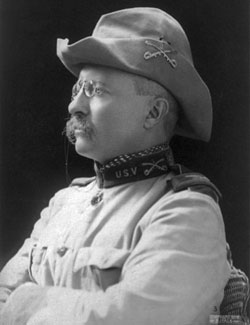From the side road, you may never know the history inside the nondescript door mere feet from the Alamo’s south wall. A sign hangs overhead announcing a doorway to history that every Texan should visit - Menger Bar.
Walking inside, the bar - which is still in operation and greets visitors daily as a part of the palatial Menger Hotel - is predictably dark despite it being early afternoon. No exterior windows and a dark, rich cherrywood interior accounts for the dimness while turn-of-the-century looking incandescent bulbs provides enough fill light to bring out the detail in the finely carved dental work.
“Hello,” I say to the bartender who’s dressed in appropriately professional togs with a hint of old school flair. He wipes the bar with a white rag and looks up to return my salutation. He offers me a drink but I decline - opting instead to talk about the history of the bar and shoot a few images.
It takes no time exploring the lower level of the bar as it isn’t all that big. Soon I scamper up the stairs to the top level and look over the rail at the black-and-white clad barkeep sifting bottles and carrying about his business before his mid-week crowd filters through the doors. Looking down, I catch a subtle waft of cigar smoke and see a man walk through the door from the hotel. Turns out, he’s a filmmaker scouting locations for an upcoming feature and figured that Texas is the place he’d find what he was looking for.

The First United States Volunteer Cavalry
The 1898 trip to the Menger Bar was Roosevelt’s second trip to the establishment. Six years earlier he was in Texas for recreation when he hunted javelinas near the Nueces River.
The 1898 trip was all business, though. Less than a month after President William McKinley signed the April 1898 law that formed volunteer military regiments in the western United States and territories, Roosevelt traveled to the Menger Bar to recruit volunteers for the cavalry in which he was appointed to command - the Rough Riders, mustered because the regular army was deemed too small to undertake a foreign military engagement. In Texas, Roosevelt knew that he’d be able to find hard-fighting men that matched what he needed for his outfit. Turns out, he was right.
“We drew a great many recruits from Texas,” wrote Roosevelt on his visit to San Antonio in his book The Rough Riders, “and from nowhere did we get a higher average, for many of them had served in that famous body of frontier fighters, the Texas Rangers. Of course these rangers needed no teaching. They were trained to obey and to take responsibility. They were splendid shots, horsemen, and trailers. They were accustomed to living in the open, to enduring great fatigue and hardship, and to encountering all kinds of danger.”
On May 16, Roosevelt joined his men just south of downtown San Antonio on land next to the San Antonio River (now named Roosevelt Park) where some 1,200 men drilled and trained on horses bought in Texas. Less than two weeks later, the men left for Florida and a couple of weeks after that, the Rough Riders were the first United States troops to land in Cuba during the Spanish-American War and cemented their place in history with their charge of San Juan Hill - a move that seized Spanish fortifications and caused the enemies retreat.